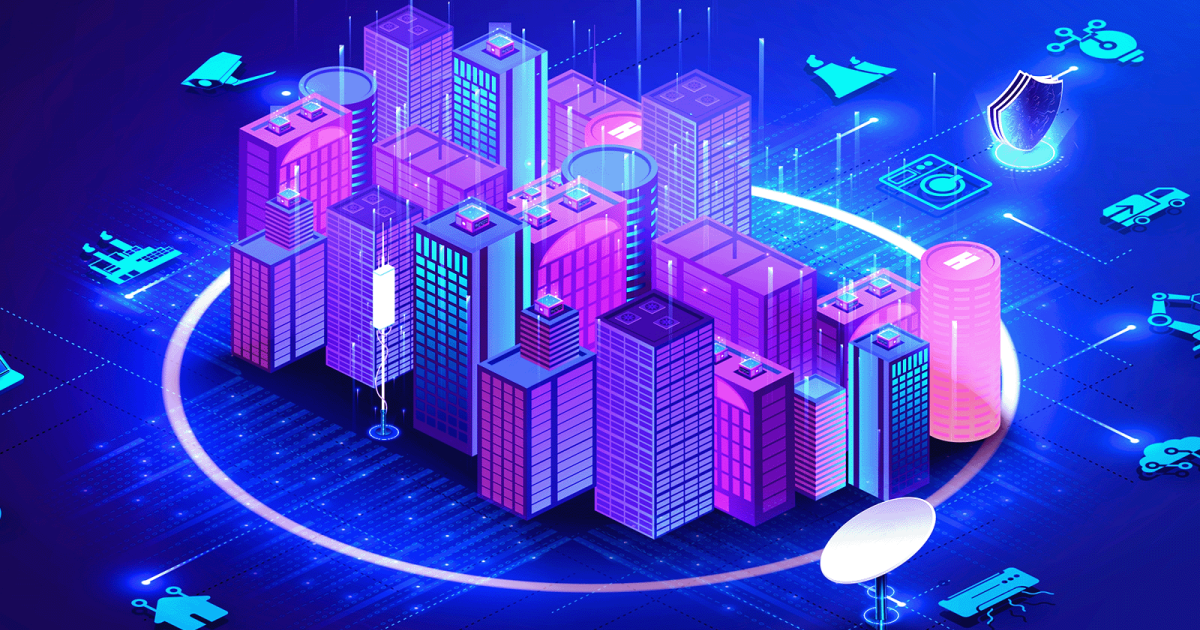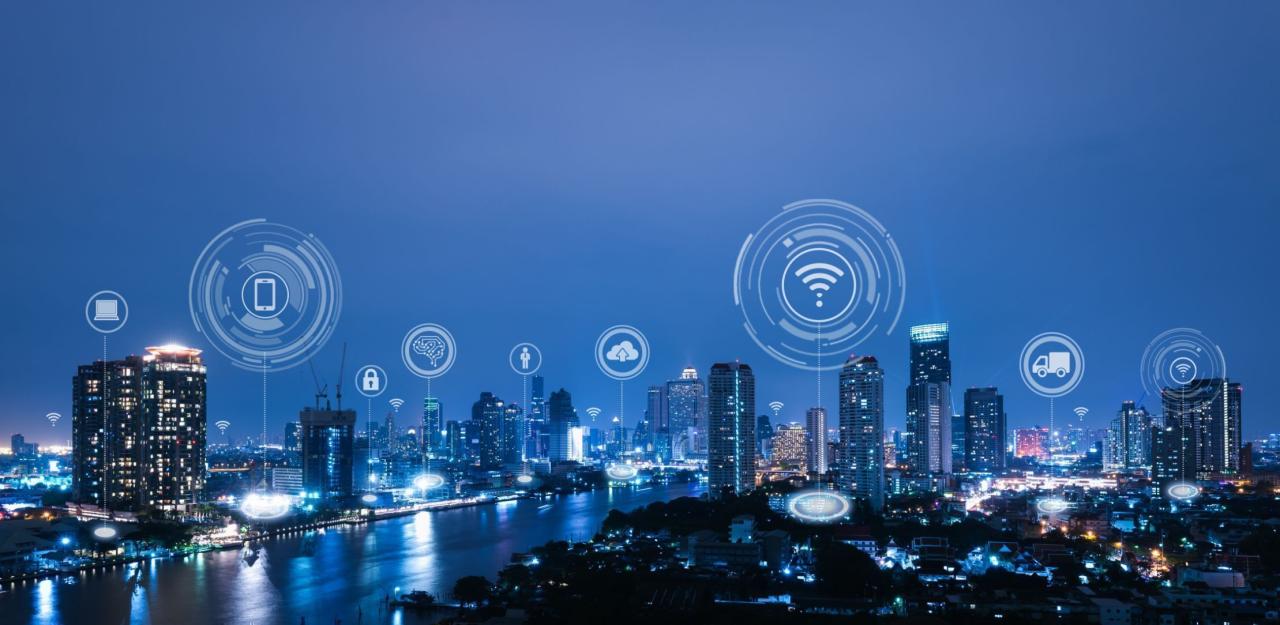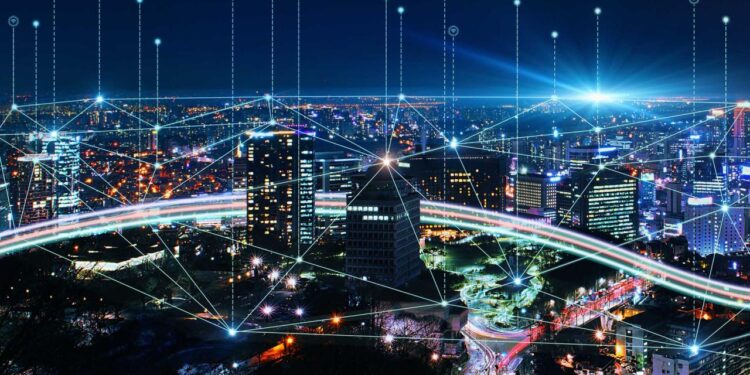The cities we inhabit today are the products of centuries of development, built layer by layer without the benefit of foresight into the digital age. But a new era of urban planning is dawning, one where technology is not an afterthought but the central nervous system of our metropolitan areas. This is the era of the smart city, a place where data and technology are leveraged to improve the quality of life for its residents, increase economic prosperity, and foster a more sustainable environment. This comprehensive article delves into the profound impact of smart cities, exploring the foundational technologies that make this evolution possible, the diverse applications that are already reshaping our daily lives, and the immense opportunities and critical challenges that lie ahead as we build the cities of the future.
For generations, urban challenges—from traffic congestion and air pollution to inefficient energy use and waste management—have been accepted as unavoidable consequences of city life. The “dumb” infrastructure of the past, with its disconnected systems and manual processes, was ill-equipped to handle the pressures of a rapidly growing global population. The smart city, however, offers a new paradigm. By deploying a vast network of sensors, cameras, and connected devices, cities can gather real-time data on everything from traffic flow and air quality to energy consumption and waste levels. This data is not just collected; it is analyzed by powerful artificial intelligence (AI) to provide insights that allow for more intelligent and responsive urban management.
The concept of a smart city is not a single, one-size-fits-all solution. It is a philosophy of urban development that can be applied in countless ways, from a small-scale project to a fully integrated, city-wide system. We are already seeing the first signs of this revolution in action: smart streetlights that dim when no one is around, automated waste management systems that optimize collection routes, and intelligent traffic signals that adapt to real-time congestion. These are not just technological upgrades; they are fundamental shifts in how a city functions. As the technologies become more affordable, more powerful, and more interconnected, we are moving closer to a future where our cities are not just places we live, but dynamic, living ecosystems that can think, adapt, and respond to our needs in real-time.
The Pillars of Smart Urban Infrastructure

The smart city is built on a sophisticated and interconnected technological foundation. Here are the core pillars that enable this new era of urban living.
A. The Internet of Things (IoT) and Ubiquitous Sensing
The very foundation of a smart city is the Internet of Things (IoT). This is a vast network of physical objects, or “things,” that are embedded with sensors, software, and other technologies to connect and exchange data with other devices and systems over the internet. In a smart city, this includes sensors in streetlights that detect motion and pollution, smart trash cans that signal when they are full, and connected meters that track water and energy use. This ubiquitous sensing provides the real-time data stream that is the lifeblood of a smart city, allowing for a level of urban management that was previously impossible.
B. High-Speed Connectivity and 5G Networks
For all these devices to communicate and exchange data in real-time, a robust and high-speed network is essential. 5G networks are the ideal solution, providing the low latency and massive bandwidth required to connect millions of devices simultaneously. 5G enables a smart city to manage a complex web of traffic signals, autonomous vehicles, and public safety systems without lag. It is the invisible infrastructure that allows the smart city to function as a single, coherent organism, with all its parts communicating and working together seamlessly.
C. Artificial Intelligence (AI) and Data Analytics
The raw data from a smart city’s IoT sensors is meaningless without a way to interpret it. This is where artificial intelligence (AI) and data analytics come in. AI algorithms can analyze vast datasets from traffic cameras to optimize traffic flow, predict crime hot spots to deploy police resources more effectively, or even analyze energy consumption patterns to identify opportunities for efficiency. The AI is the “brain” of the smart city, taking in a continuous stream of data and turning it into actionable insights that can improve the city’s performance and the quality of life for its residents.
D. Cloud Computing and Edge Computing
The immense amount of data generated by a smart city’s IoT network cannot be processed on-site. Cloud computing provides the scalable and centralized infrastructure to store and analyze this data. However, for applications that require a split-second response, such as an autonomous vehicle braking to avoid a collision, relying on the cloud is too slow. This is where edge computing plays a crucial role. Edge computing processes data closer to its source, at the “edge” of the network, enabling real-time decision-making for mission-critical applications. The combination of cloud and edge computing provides a flexible and powerful architecture for the smart city.
The Smart City in Action

The technologies of a smart city are being applied to a wide range of urban challenges, creating tangible benefits for residents and the environment.
A. Intelligent Traffic and Mobility Management
Traffic congestion is a major source of stress, pollution, and lost productivity in cities worldwide. Intelligent traffic management systems use sensors and cameras to monitor traffic flow in real-time, and AI algorithms to adjust traffic signals dynamically. This can reduce congestion, improve commute times, and lower fuel consumption. Furthermore, smart cities are the perfect testing ground for autonomous vehicles and new forms of shared mobility, which promise a future of safer, more efficient, and more sustainable transportation.
B. Sustainable Energy and Environmental Monitoring
A smart city is an energy-efficient city. Smart grids use data to optimize energy distribution, while smart meters give residents and businesses the information they need to manage their own consumption. Smart streetlights, which use motion sensors to only light up when needed, can drastically reduce a city’s energy bill. Furthermore, IoT sensors can provide real-time environmental monitoring of air quality, water quality, and noise pollution, giving city officials the data they need to enact policies that improve public health.
C. Public Safety and Emergency Response
In a smart city, public safety is a top priority. A network of connected cameras and sensors can help police departments identify and respond to crimes more quickly. AI can be used to analyze data to predict potential crime hot spots, allowing for a more proactive approach to public safety. In an emergency, a smart city’s connected infrastructure can provide a real-time picture of the situation to first responders, allowing them to route vehicles more effectively, access building blueprints instantly, and save precious minutes.
D. E-Governance and Citizen Engagement
A smart city is a city that is more responsive to its residents. E-governance platforms allow citizens to interact with city services, from paying taxes to reporting a pothole, through a single digital portal. Data from the IoT network can be used to inform urban planning decisions, ensuring that new parks, roads, and public services are built where they are needed most. This data-driven approach to urban management fosters a more transparent and engaged relationship between the city and its citizens.
Overcoming Challenges to Build the Future
Despite the immense promise of smart cities, their development is not without significant challenges that must be addressed.
A. Privacy and Data Security
The vast network of sensors in a smart city collects an unprecedented amount of data on its residents. This raises major concerns about privacy and data security. Who owns this data? How will it be protected from hackers and misuse? Could this data be used for surveillance or social control? The development of clear regulations, strong data encryption, and transparent data usage policies will be crucial to building a smart city that its residents can trust.
B. The Digital Divide and Accessibility
The benefits of a smart city are often dependent on access to technology and high-speed internet. This could create or exacerbate a digital divide, where some residents have access to the benefits of a smart city while others are left behind. Ensuring equitable access to technology and digital literacy programs will be a key challenge in building a smart city that is truly inclusive and serves all its residents, not just a privileged few.
C. Interoperability and Standardisation
A smart city is a complex ecosystem of devices and systems from different vendors. For these systems to work together seamlessly, there must be a high degree of interoperability and standardization. The lack of universal standards can create a fragmented system where different devices and platforms cannot communicate with each other, limiting the city’s ability to operate as a single, coherent system. Governments and industry leaders must collaborate to develop open standards that foster innovation while ensuring compatibility.
D. Cost and Funding
Building a smart city is an incredibly expensive undertaking, requiring a massive investment in new technology and infrastructure. Securing the necessary cost and funding is a major challenge for many cities. Public-private partnerships, where private companies provide the technology in exchange for a share of the revenue or a long-term contract, are one potential solution. However, a city must be careful to ensure that these partnerships serve the public good and are not just a way for companies to profit.
Conclusion
In conclusion, the rise of smart cities represents a profound and necessary evolution in urban development. By leveraging the power of data and technology, cities are no longer just static collections of buildings and roads but are becoming dynamic, intelligent ecosystems that can respond to the needs of their residents in real-time. This revolution is built on the technological pillars of the Internet of Things, 5G networks, AI, and cloud computing, each working in synergy to create a more efficient, sustainable, and livable urban environment. The applications of this technology are already transforming everything from traffic management and public safety to energy efficiency and citizen engagement, demonstrating that a smarter city is a better city.
The promise of the smart city is immense. It offers a solution to some of the most pressing challenges of our time, from the global climate crisis to the pressures of rapid urbanization. It holds the potential to create cities that are more efficient, less polluted, and more resilient to future shocks. It promises a future where our daily commute is less stressful, our air is cleaner, and our public services are more responsive. This is not just a technological upgrade; it is a blueprint for a better and more sustainable future.
However, as we build these cities of tomorrow, we must do so with a clear understanding of the challenges that lie ahead. The issues of privacy, data security, and the digital divide are not footnotes; they are central to the ethical development of a smart city. We must ensure that the smart city is an inclusive space that serves all its residents, and we must create a framework of regulations and standards that protects the public while fostering innovation. The smart city is a testament to human ingenuity and a powerful tool for progress, but its ultimate success will be measured not by the sophistication of its technology, but by its ability to create a more equitable, more sustainable, and more human-centered urban future.



